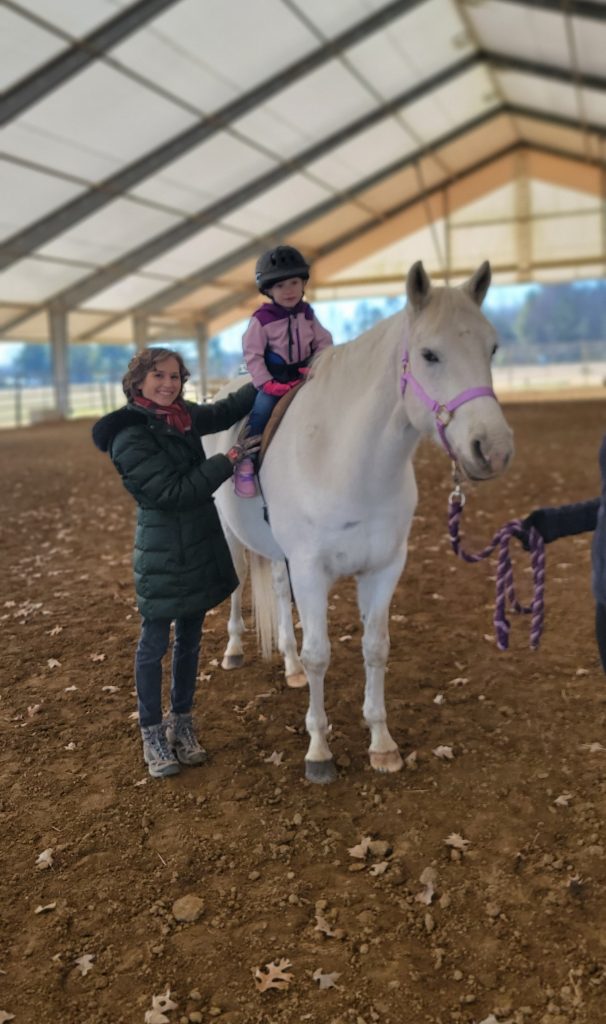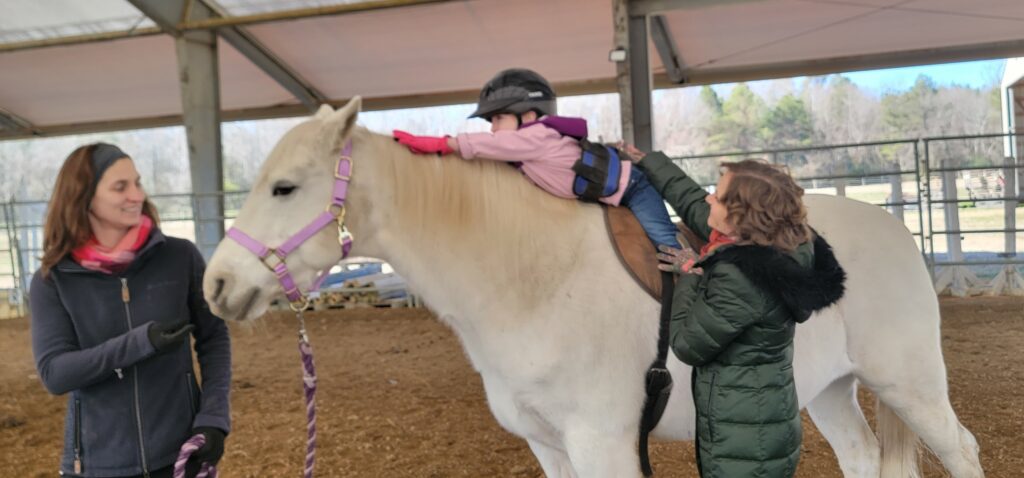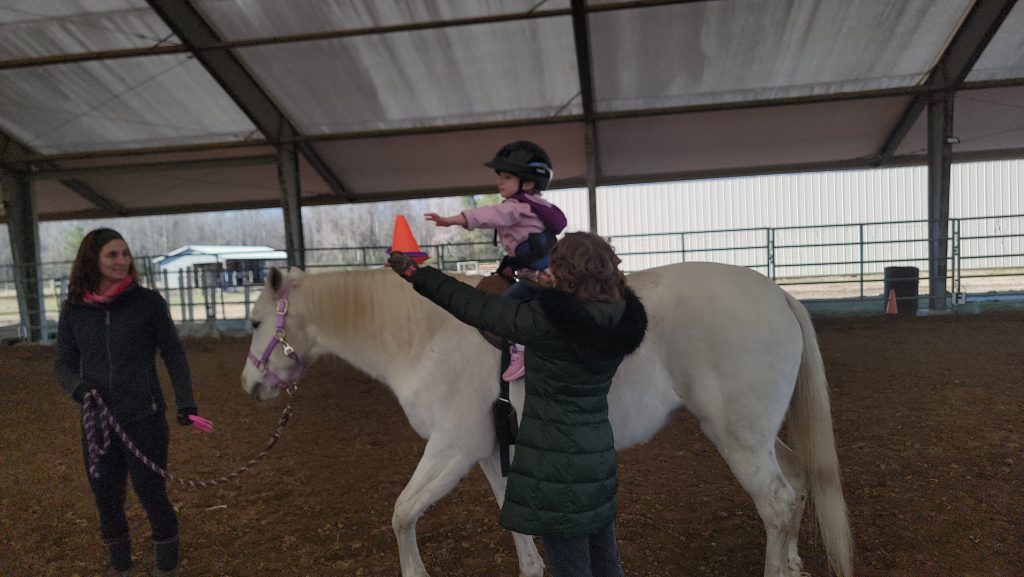Looking to start your own practice incorporating hippotherapy? Here are the essentials every new or existing practice needs.

I recently started my own Occupational Therapy practice incorporating hippotherapy as an AHCB Certified Therapist and a PATH Registered Therapist. I have started with the basics, and encourage you to do the same! At our barn, we use tack available to us from the owners, a bareback pad, and equipment from around the farm for activity ideas.
I brought to the barn my bins of therapy tools/toys I have collected from my years in outpatient therapy, and I hardly use them! I have been challenging myself to utilize the equine movement, positions, and change of terrain/environment around the farm as my main focus. This keeps planning simple for me, limits interruptions in the quality movement to do activities, and highlights the most important tool: the horse!
That being said, there are some essential items you want to have available for your use. In an attempt to keep it short, I will highlight in list format below:
Safety
Helmets
Use ASTM/SEI approved if possible. If those helmets do not work due to:
- Poor fit
- Inadequate Coverage
- Excessive Weight
- Sensory Impairment
- Other
have patients/caregivers sign a waiver like the one found in the American Hippotherapy Course Manuals. Provide one in every size: toddler, x-small, small, medium, large. Supply spray disinfectants to sanitize between patients.
- ASTM/SEI approved helmet
- Sports helmets United States Consumer Product Safety Commission-Approved bicycle helmet
- Danmar
, Protecto-Cap
, Thudgard
, custom-made for seizure activity
- Bumper Bonnet helmet
with Neck Boppy
Safety belts
ALL of my patients wear this safety belt. I do not always have a hand-hold on it, and you have to be careful not to hold too tightly and negatively impact the translation of movement from horse to patient or the patient’s adaptive response to the movement. Volunteers have to be reminded of this as well!

First Aid
- First aid kit
- CPR masks and bag
- CPR and first aid training
- AED
Liability insurance
I have used both of these companies, I am currently using Berxi as they are quoted cheaper. These are generally regarded as good providers in the hippotherapy world!
Tack
Make sure the tack fits the horse you are using. You can do a lot with just a bareback pad! This is my go-to piece of equipment. It translates the most heat and movement to the patient and provides the least amount of support. A bareback pad can easily be graded with positioning tools.
- Bareback pads:
- Surcingles:
- With handles
- Without handles
- Long-lines: best way to lead a horse to translate optimal movement to patient
- English saddle
- Western saddle
- Child-sized treeless saddle
- Bareback pad with peacock stirrups
- Halter
- Lead rope
- Brushes
Positioning Tools
- Boppy pillow
- Pool noodles
- Bean bags
- Beach balls
- Wedge
Social Story
I let some of my patients borrow this social story to read between sessions:

Activities
- Wrist ribbons
- Rings and cones
- A small shopping basket and grocery food
- Zoo animals / baby and mom animals for matching
- Different color buckets to place things in/retrieve things out of
- Shape sorters
- Fat Brain Toys
- Clothespins or hair/mane clips
- Balls for catch/throw, basketball hoop
- Brushes
- Sensory toys
- Airplanes or other flying toys; patient can pretend to be flying in the air too
- Bean bags
I like to place any extra activity props on a barrel, so we can ride to the barrel and pick up items as needed.

Disclosure: This post may contain affiliate links, meaning I get a commission if you decide to purchase through my links, at no cost to you.
